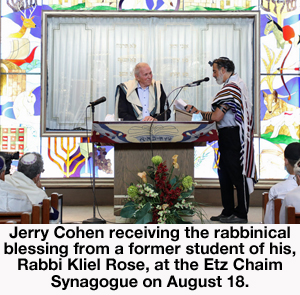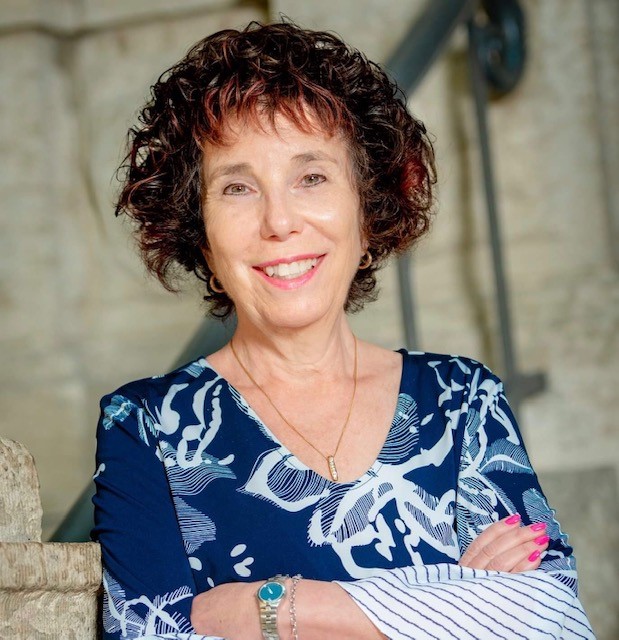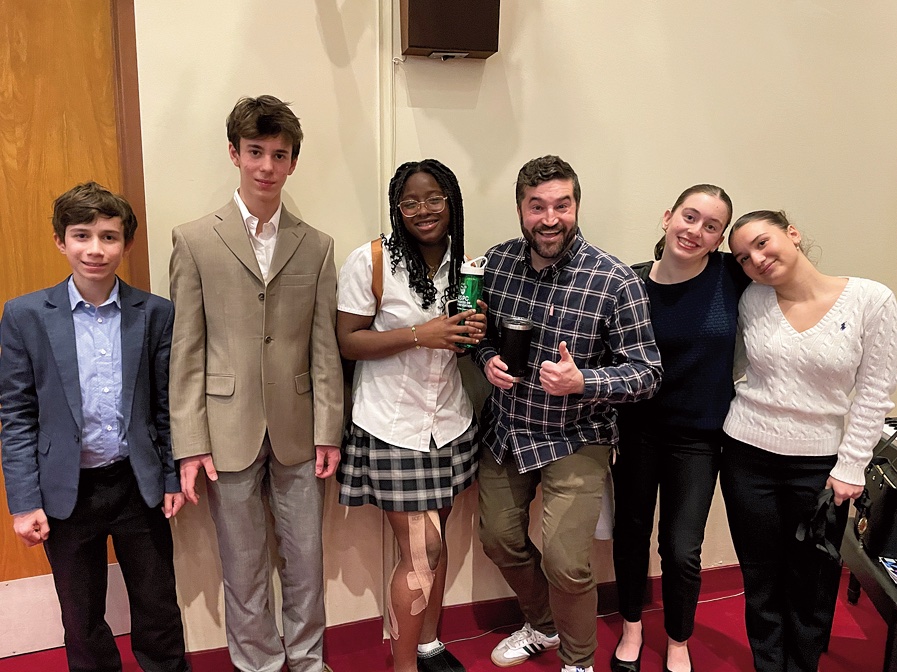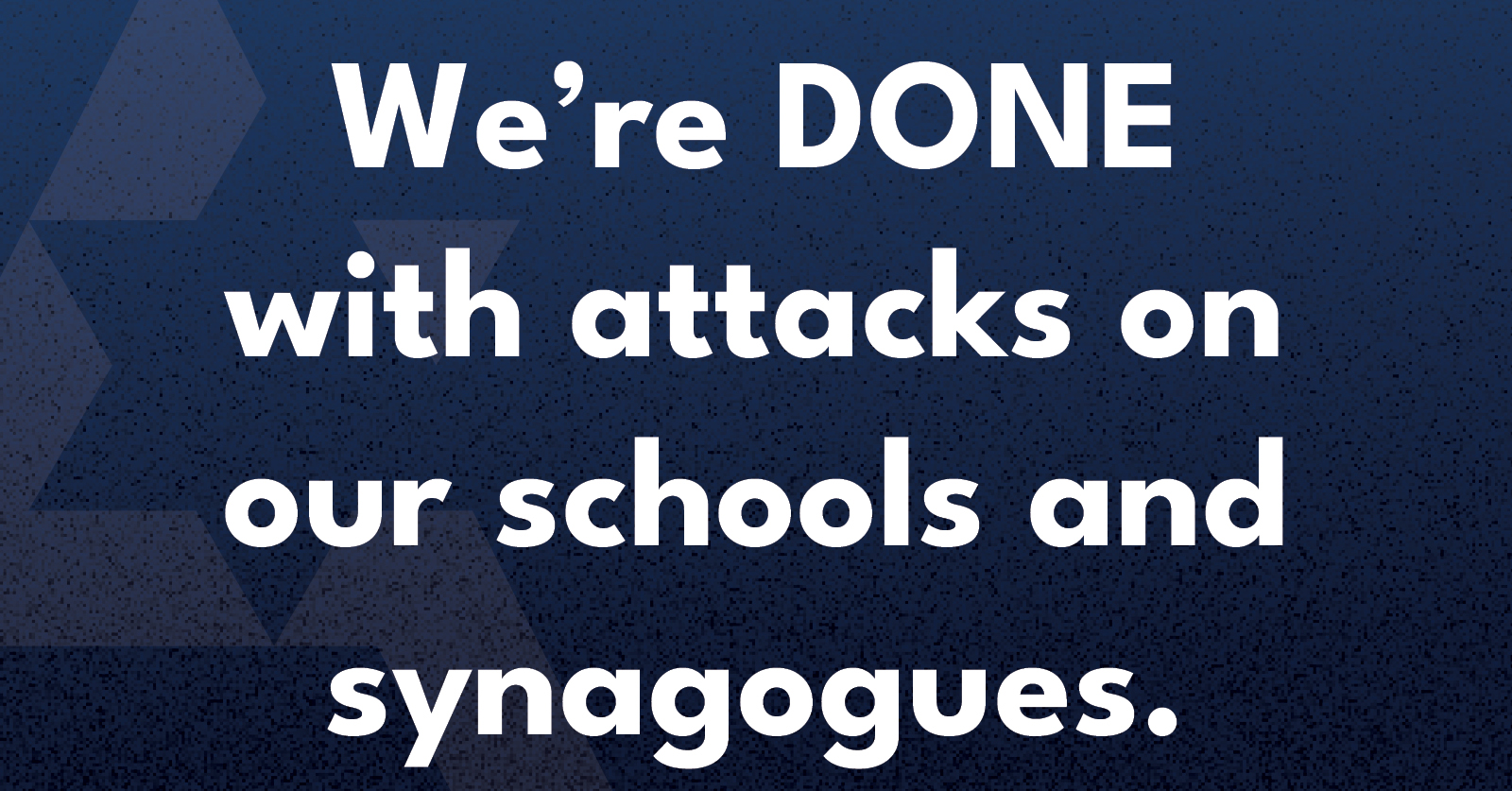Local News
Jerry Cohen: better the second time around
 By GERRY POSNER Cohen, Shell, Margolis, Diamond, Coodin, Slayen, Bloomfield, Simkin and many more family names all were in attendance on Thursday, August 18, 2022 at the Etz Chaim Synagogue for the second Bar Mitzvah of Jerry Cohen. In truth, the Bar Mitzvah was to have taken place last year in Cohen’s 83rd year, but Covid interfered with the event at that time so the simcha was postponed a year. But even with a year’s delay, the joy of the moment was everywhere, Covid or not. What was present was happily, not Covid, but Kavod.
By GERRY POSNER Cohen, Shell, Margolis, Diamond, Coodin, Slayen, Bloomfield, Simkin and many more family names all were in attendance on Thursday, August 18, 2022 at the Etz Chaim Synagogue for the second Bar Mitzvah of Jerry Cohen. In truth, the Bar Mitzvah was to have taken place last year in Cohen’s 83rd year, but Covid interfered with the event at that time so the simcha was postponed a year. But even with a year’s delay, the joy of the moment was everywhere, Covid or not. What was present was happily, not Covid, but Kavod.
Cohen of course is not the first person to have a go at a second Bar Mitzvah. One can recall not that long ago, the late Mel Neumann and Lou Cogan also had their respective second Bars. And no doubt there have been many others. The inspiration for Cohen occurred 17 years ago when Cohen was a mere 66. His uncle, Abe Simkin, chanted a Haftorah at his then second Bar (Abe would live long enough to try for a third if he wanted to do so), also at Etz Chaim and that memory stayed with Jerry.
Now Cohen is not exactly a stranger to the synagogue; his Jewish roots were and are strong. He was after all, a graduate of the Peretz School, a kind of a disciple of the late Rabbi Zalman Schachter and, later in his life, the principal of Joseph Wolinsky Collegiate. Yet, this was a big step to take and it was one that gave Cohen pause. He planned the event carefully. One of the reasons for the careful planning was that there were many people who wanted to be present for this major moment for Jerry, not the least of whom was Jerry’s sister, Saralyn Greenblatt who, along with her husband Jim, came from Israel to Winnipeg with their children and grandchildren, consisting of 23 out of a 24 possible relatives. Perhaps that was not a surprise given that family has played a large role in Jerry Cohen’s 83 years.
As it turned out, there were about 140 people who gathered at the former Rosh Pina Synagogue to hear Jerry read from the Torah, chant the Haftorah and then give a D’var Torah. My sources (and there were many) all confirmed that, on each count, Jerry was not just on key musically, but that he hit the right note in everything he did and said. Moreover, he managed to find a way to include all of his children, their spouses, grandchildren, and a collection of in-laws into becoming integral parts of the service, which was held on a Thursday morning. In addition to those in the building who watched Jerry in person, there were countless others who were glued to the screen as the service was available on Zoom. All that was missing were the advertisers.
Because the service was on a Thursday and, as a result on Zoom, although I was unable to see it live, I was able to watch it after the fact. It was clear to me, what a wonderful simcha this was. One of the significant moments for me was being able to watch Cantor Tracy Kasner, a former student of Jerry’s bless – in a musical way, her former principal.
Later the Rabbi, Kliel Rose, also another former student, gave his blessings to the Bar Mitzvah boy. At one point- after the chanting of the Haftorah, Jerry threw out candy to the congregation, which was a reverse of the usual tradition. And, what about the conclusion, when Canadian Klezmer legends, Shayla Fink and Kinzy Posen, broke out into Simmon Tov, Mazel Tov from the bimah, to the delight of everyone gathered for this big day. Most of all, what stood out was the message Jerry delivered in his D’var Torah arising from his Torah portion and Haftorah, emphasizing the need to listen to each other and also to take joy and happiness from what is around us, even in these times of turmoil.
The synagogue service was not the only part of the celebrations as, at the kiddish later, Kinzey and Shayla entertained the guests. Some of their music included Cohen descendants singing along with them, including 11 grandkids who performed a special tribute to Jerry. In that respect for sure, “the willingness to get up on stage gene” is very much alive in the next generation of the Cohen Mishpacha. The festivities continued with a gathering on Thursday night plus a kosher Shabbat dinner at the Convention Centre on Friday August 20 for the family and out of town guests.
For Cohen, it was a meaningful reaffirmation of his Judaism allowing him to reflect on his place and time and to do it with many of his family and friends. I say a hearty Mazel Tov to Jerry Cohen and indeed his whole family for making the effort to create such a significant moment for all of them. Cohen admits with all of that behind him now, he can truthfully say he was better on his second Bar Mitzvah than the first. Of course, he did receive lots of cuff links for presents at his first Bar Mitzvah, but greater fulfillment from the second one. A couple of Cohen’s old friends even presented fountain pens to him to honour the occasion. I expect Jerry to use the pens to write his thank you notes.
Kudos to Cohen!
Local News
Cheryl Hirsch Katz, Jewish Child and Family Service’s longest serving staffer, set to retire at end of the month

By MYRON LOVE “I loved working at Jewish Child and Family Service,” says Cheryl Hirsh Katz, who is due to retire at the end of June. “I have always appreciated the warm and welcoming atmosphere here. I feel that the people working here are my extended family. I am going to miss my colleagues”.
“I have derived great satisfaction over the years to have been able to help many people in our community of all ages through my work at JCFS,” she continues.
After 44 years at the agency, Katz, the longest-serving member of the staff, was given an appreciative send-off at the JCFS’s recent (June 23) Annual General Meeting at the Shaarey Zedek Synagogue.
The daughter of Art and Bess Hirsh, Cheryl grew up in Garden City. She attended Peretz School, then Jefferson Junior High and Garden City Collegiate. She joined the staff of JCFS in 1981, shortly after receiving her Bachelor of Social Work degree.
She earned an MSW in 1990.
“I chose to become a social worker,” she recalls, “because I always wanted to be able to help people.”
Katz was originally hired by JCFS to work with newcomers. After a couple of years, she was given responsibility for looking after the needs of older adults.
“I really enjoyed working in older adult services,” she says. “That is where I spent the bulk of my time at JCFS.”
After ten years as a case worker, she was promoted to a supervisory role. Later, she was also given responsibility for mental health and addictions programming and settlement services, while keeping the older adult files under her purview.
“As a supervisor, I wasn’t directly involved with individual clients,” she points out. “I was more involved with programming. Among the programs for seniors we organized were – for example – sessions on elder abuse, digital storytelling and memory loss.”
She notes that one of the trends she has seen over the last 44 years is that people are living longer and living in their homes longer. A lot more of our clients are living well into their 90s,” she observes. “We have had to continually expand our staff and the services we provide in order to accommodate the growing demands of an aging population.”
She also spoke of the mental health needs of seniors and aging Holocaust survivors.
She says that she has mixed feelings about leaving JCFS. “After so many years working full time, I am going to have to create a new routine,” she comments.
She notes that, now that she is retired, she will have more time to spend with her parents – who are in their 90s.
And then, there are the two dogs to look after. “I will have time now to try new activities,” she says. “ I might learn to play mah-jong.”
She speaks about maybe doing some traveling – although her husband, Murray, is still working full time.
(She and Murray have one daughter, Farah.)
“Retirement may also include some volunteering,” she adds.
It is quite likely, she will be continuing her association with JCFS but in a volunteer capacity.
Local News
Gray Academy students shine in provincial, national debating competitions

By MYRON LOVE It has been another good year for Gray Academy’s high school students who participated in provincial and national debating competitions. The best results were recorded by Grade 9 student Noa Mednikov, who finished fourth overall nationally, fourth in interpretive reading, and fifth in persuasive speaking at the junior National Public Speaking Championship in early May in Vancouver.
Last October, in the Junior Provincial British Parliamentary Championship – which was held at St. John’s-Ravenscourt – Noa and her partner, Raya Braunstein, finished third as a team while Raya placed third in individual debating.
Their fellow Grade 9 student Maxim Moscalenkov tied for first in persuasive speaking in Vancouver, while the Gray Academy team of Gabe Tapper and Aaron Koplovich finished fifth. Aaron also finished fifth in his individual debate.
Earlier, in March, Maxim finished fifth in the Provincial Juniors debating competition, which was held at Balmoral Hall He and his debate partner, Nate Shenkarow, finished seventh among the teams entered. Last November, he and partner, Ethan Tenenbein, finished seventh in the Junior Prepared Tournament – just behind the Gray Academy team of Nate Shenkarow and Jack Kay.
At the senior high level in that competition, the team of Jacob Tenenbein and Jonah Novoseller finished fourth and Jacob was recognized as fifth best in an individual capacity. Jonah and Jacob also paired up to win the Asper Cup, which was held at their home school.
Jacob represented Manitoba at the Junior National Speech Championship in Vancouver in May and, last October, he and Grade 12 Gray Academy students Julie Krozkin and Daniel Bokser represented Canada at an international debating tournament in Bermuda.
Gray Academy’s debating program was introduced by Linda Martin in 2003. She also led the debating teams at Balmoral Hall. In 2011, Martin was succeeded by Gray Academy high school English teacher Andrew Kaplan.
“Andrew has done a wonderful job with the debating program” says Martin, who has a debating trophy at Gray Academy named in her honour, as well as a provincial trophy for best individual junior debater. “Over the years, Gray Academy students have done very well in many local, national and international competitions,” she adds.
About three weeks ago, this writer had the opportunity to sit down with Andrew Kaplan and six of the school’s top debaters while they discussed the benefits of learning how to debate. According to Noah Strauss – who competed in the Junior Provincials at Balmoral Hall in March, public speaking leaves him with a feeling of accomplishment.
“It’s a good skill set to have,” he observes. “It builds confidence.”
“A benefit of being able to debate is that you learn how to convince people that you know what you are talking about,” adds Maxim Moscolenkov.
Raya Braunstein notes that being able to debate is a skill that she expects to be helpful in many university courses which she may choose to take.
As Andrew Kaplan notes, the ability to express yourself has a great impact in whatever career you choose to pursue.
He points out that debating is compulsory at Gray Academy for all Grade 7 and 8 students – and students can continue debating as an option in the higher grades
Of course, competitive debating is not for everyone. For those students who opt to take that path, the journey begins with internal school debate competition – with the top debating teams and individuals qualifying for local tournaments and – potentially – beyond.
Andrew Kaplan reports that a small number of high schools in Winnipeg and southern Manitoba have active debating programs – including St. Johns Ravenscourt, St. Paul’s High School, St. Mary’s Academy, Garden City and Maples Collegiates in the Seven Oaks School Division, St. Maurice (a Catholic School), as well as Morden Collegiate and Dasmesh, a Sikh private school.
Kaplan expresses his appreciation to the Asper Foundation and an endowment spearheaded by the Kives Family for providing funding for the Gray Academy debating program – as well as the Andrew Slough Foundation – which was established by his friends in memory of the outstanding former Ravenscourt student debater and lawyer who passed away suddenly two years ago at the still young age of 38.
I am confident that our Jewish community can look forward to the continued success of Gray Academy’s star debaters and to the continual emergence of future stars as the times goes by.
Local News
Antisemitism has crept into grade school in Canada

Antisemitism in Canada has moved beyond protests and politics; it is now entering classrooms and altering how Jewish children see themselves functioning within them.
A a university student I have observed the experience of my younger brother in grade eight as a Jewish student. Over the past few months, his school has been at the center of several deeply troubling incidents that have made him feel unsafe in our parks, community, and even his school. Swastikas were drawn around the community, in parks and ponds. Additionally, an older man, who claims to be a pro-Palestinian influencer, stood outside his predominantly Jewish school wearing a keffiyeh, filming a video which then circulated between students on TikTok.
This same man later showed up to our local Jewish community center in keffiyeh to allegedly watch his son play basketball where my brother and many of his classmates go for their lessons, basketball games, and Jewish events. These moments made him and his peers feel watched and targeted just for being Jewish. Local political representatives condemned the incidents and raised awareness about antisemitism, but the fear among students didn’t go away. The feeling of being targeted for simply existing has been taught to my brother, something my parents had tried their hardest to escape from.
Most recently, my brother was chosen to represent his school at a regional science fair. When one of the judges arrived wearing a keffiyeh, he froze. For many, including my brother after the incidents he has faced, the keffiyeh represents a political message. But even more so for my younger brother, it is tied to the fear and intimidation he had already experienced. He felt nervous, distracted, and unsure of how to act.
This is not about silencing political expression. It is about a child who came to share his ideas and left feeling uncertain and afraid. It is about the atmosphere forming in Canadian schools, where Jewish students are being made to feel targeted and unwelcome.
His school made an effort to address the incidents, but the impact is lasting. Posts on social media, much can be very vague at times about inclusion cannot fully undo the feeling of being singled out. A kind word from a teacher does not erase the fear that builds when threats are left unspoken but deeply felt.
I am writing this as a sister who watched her younger brother lose a moment that should have been filled with confidence and pride. He deserved to feel safe. So do all Jewish students in this country.
Moving forward, schools must take concrete steps to protect all students. Antisemitism cannot only be addressed when it becomes violent or overt. It must also be recognized when it appears as intimidation, symbolic targeting, or political messaging that creates fear among students. Children should never have to question whether they are safe in their own classrooms or community spaces.
Events that are meant to support and celebrate students must remain focused on them. Individuals who feel the need to bring political symbols or messages into school grounds or children’s events should not be welcomed in those spaces. Schools must make it clear that their environments exist to support learning, safety, and inclusion, not to host agendas that can intimidate or isolate students.
Administrators and educators must develop clear guidelines for identifying and responding to antisemitic behavior in all its forms. This includes strengthening security measures, offering ongoing staff training, and engaging directly with Jewish families to understand their concerns. Inclusion is not a one-time statement. It is a responsibility that must be reflected in everyday decisions and actions. No child should ever feel unsafe or unwelcome because of their identity.
The author is a Campus Media Fellow with HonestReporting Canada and Allied Voices for Israel who lives in Toronto.
